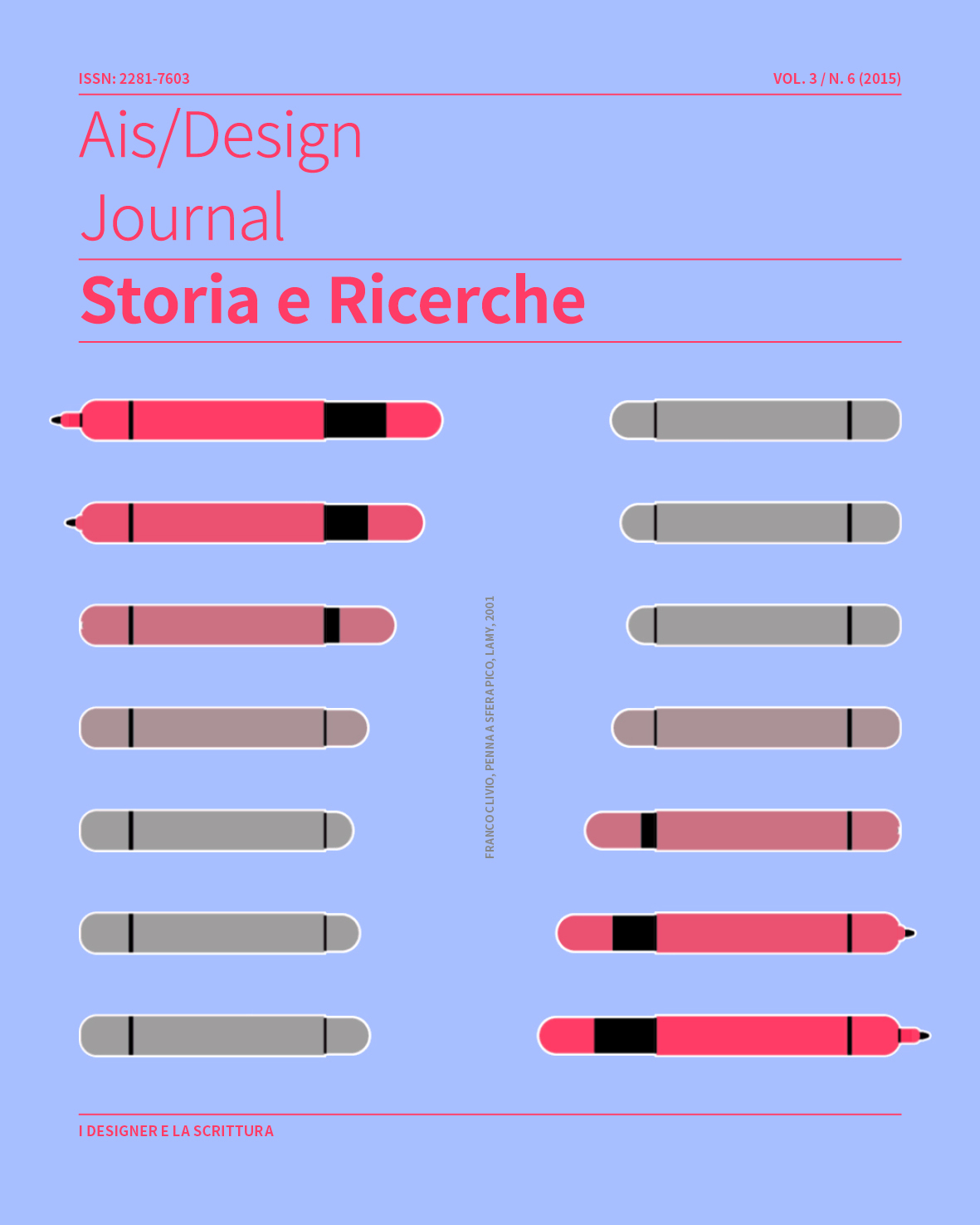Designers and Writing in the Twentieth Century
Abstract
In recent years we have witnessed a renewed acknowledgement of the value of writing for designers, and the issue of the critical use of writing as related to design and as a design mode has emerged on several levels. Taking the observation of this interest in writing as a point of departure, Issue n. 6 of the magazine intends to reflect on how writing was practised by designers in the twentieth century, and on the many different ways it has been used for both personal and private, operational, theoretical-critical, historic, programmatic, educational and pedagogical purposes.
Norman Potter, in his essay What is a Designer? (1969), wrote that “[d]esigners use words constantly and in direct relation to their work” and that the “ability to use words clearly, pointedly, and persuasively” is relevant, though often underestimated, aspect of a designer’s work. Designers, however, have used and relied on the support of the written word not only in relation to their strictly professional work. Historically, writing has been for designers an indispensable tool for the theoretical development, construction and popularization of the discipline. Starting in the nineteenth century and increasingly throughout the twentieth century, designers have written about their own work and that of others; they have advanced programmatic manifestos and written texts that have become essential to the discipline; they have founded and directed magazines, fostering the critical debate; they have published books and educational textbooks. The writings of the most illustrious figures, which have become classics, continue to influence new generations of designers, scholars and critics. It should not be forgotten, moreover, that in Italy in particular, the design culture has always demonstrated a marked propensity for theoretical and critical debate, and many Italian designers are renowned for their prolific, assiduous and passionate production of writings, and for their direct involvement in editorial projects that have had a strong impact on international commentators, scholars and designers.
The articles we have gathered here examine the objectives and the ways in which designers have embraced the medium of writing, concurrently or within their design practice, or for the purpose of advancing thought, criticism or divulgation; they also explore the language, the wording and the editorial formats chosen by designers for their texts and consider the influence of these texts on the education and on the profession of designers.
Some of the articles examine writing as a form of personal reflection for figures of designers such as Giancarlo Illiprandi, Gabriele Devecchi, Anna Maria Fundarò, researching heretofore unpublished documents and archives. As the experiences of these designers demonstrate, however, writing is rarely an exclusively personal or private event. More often than not, writings are motivated by the need to manifest, present and assert an idea of design before a community or an audience of readers, as shown in the articles that examine the work of Pierre-Louis Flouquet, Charlotte Perriand and Bernard Rudofsky, highlighting the relationship that exists between the content and its presentation. In addition to asserting and promulgating the discipline of design, designers have relied on writing and editorial mediation for critical intents, to undermine apparent certainties, to problematize and open vistas onto the culture and the interpretation of design as a discipline, as witnessed for example by the case of Alessandro Mendini and his experience with Domus Moda. Apart from the articles dedicated to individual figures of designers, other articles in this issue take a more ample point of view, sometimes examining texts by different authors connected by their choice of theme – colour as a design tool –, or addressing the key issue of writing as an integral aspect of the education of a designer – the experience of the Information Department at the Hochschule für Gestaltung in Ulm –, or focusing on the exquisitely linguistic aspects of design writing, especially in Italian.
The theme of writing is also addressed in two reviews dedicated to the autobiography of Leo Lionni and to the book La moda nei discorsi dei designer by Alessandra Vaccari, while the other reviews discuss two exhibitions organized at the Triennale Design Museum – the seventh edition of the museum itself, Il design italiano oltre le crisi, and the exhibition Ugo La Pietra. Disequilibrating Design.
On the occasion of the release of this issue, a new contribution has been added to the section “On Design History” of the AIS/Design society website: a re-reading of the Charter of Graphic design (La Carta del Progetto Grafico) by one of this document’s main proponents, twenty-five years ago, Giovanni Baule.
Copyright (c) 2015 Fiorella Bulegato, Maddalena Dalla Mura, Carlo Vinti

This work is licensed under a Creative Commons Attribution-NonCommercial-NoDerivatives 4.0 International License.
Creative Commons NonCommercial-NoDerivates 4.0 international License (CC BY-NC-ND 4.0).


